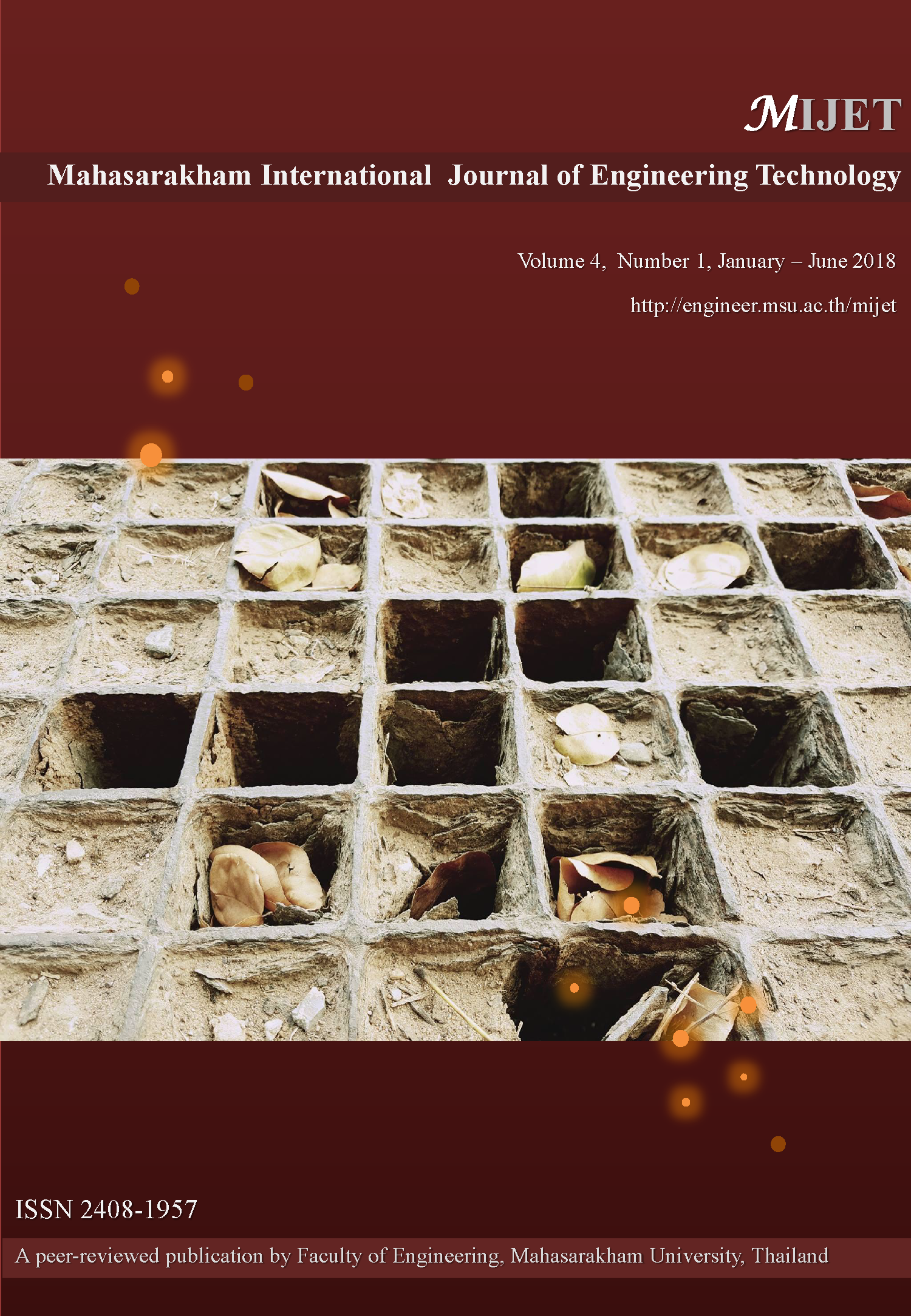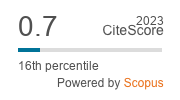Design, Development and Control of an Autonomous Underwater Robot “Poo-Pang” for Thai Navy Military
doi: 10.14456/mijet.2018.5
Keywords:
Autonomous Underwater Robot, Quality Function Deployment, QFD, Design and DevelopmentAbstract
Autonomous Underwater Robots (AURs), nowadays, play an important role in many applications, in particularly, the military projects. Design and development of most AURs in the military projects of Royal Thai Navy in the past would be based only on unsystematic, self-concept or ideas, which could lead to unsatisfactory results when implemented. This paper presents design, development and control of the “Poo-Pang” AUR to serve three proposes of Thai navy military project; (1) underwater survey under to conserve the environment and underwater resources, (2) military diving training, and (3) inspection of underwater ship structures to find any water leakages. The robot was developed using technical design parameters obtained from the Quality Function Deployment (QFD) design method. A prototype robot was constructed and tested with the conventional PID control. The experimental results showed that the constructed robot could operate and meet the 3 requirements of the project.
References
[2] J.Buesher, W.Chang,M.Delance, V.Goel, D.Hay, D.Hinkes, M.Munyoki, V.Muste, K.Nakagawa, A.Shih, P.Sieh, B.Silverthorn, R.Stenson, D.Weaver, S.Weeks, S.Welch, R.Winoto, Cornell University Autonomous Underwater Vehicle 2002, Cornell University, https://www.auvsi.org/competitions/2002/papers/Cornell.pdf.
[3] R.C.Altshuler, S.S.Atkins, A.A.Cavic, C.C.Shase, R.S.Cortesi, B.M.Davis, F.J.Delatorre, J.D.Elgart, J.Mallett, C.R.Muller, S.O.Newburg, F.B.Polito, M.S,Reynolds, E.D.Smith, and E.C.Warmann, ORCA-II: An Improved Autonomous University Vehicle, Masachusetts Institute of Technology (MIT), https://web.mit.edu/orca/www/papers99.pdf.
[4] X.Lin and S. Gue, Development of a Spherical Underwater Robot Equipped with Multiple Vectored Water-Jet-Based Thrusters, Journal of Intelligent & Robotic Systems, Springer Science, Sept 2012, Vol.67, issue 3-4, pp.307-321.
[5] T.Takemitsu, M.Ogura, T.Tasaka, A.Minami, T.Yokomichi and K.Ishii, System Design and Increment Hardware Development of an Autonomous Underwater Robot “DaryaBird”, AUVSI&ONR’s 14thRobosub Competition Journal Paper, pp.1-8, 2011.
[6] Y.Akao, Quality Function Deployment: Integrating Customer Requirements into Product Design, Productivity Press, Cambridge, MA, 1990.
[7] Y.Akao, Quality Function Deployment: Integrating Customer Requirements into Product Design, Productivity Press, Cambridge, MA, 1990.
[8] L.K.Chan, A systematic approach to quality function deployment with a full illustrative example, Omega, 33 (2) (2005)119–139.
[9] M.H. Korayem and A. Iravani, Improvement of 3P and 6R mechanical robots reliability and quality applying FMEA and QFD approaches, Robotics and Computer-Integrated Manufacturing, 24 (2008) 472–487.
[10] C.G. Sørensen, R.N. Jørgensen, J. Maagaard, K.K. Bertelsen, L. Dalgaard and M. Nørremark, Conceptual and user-centric design guidelines for a plant nursing robot, biosystems engineering, 105 (1) (2009) 1–11.








